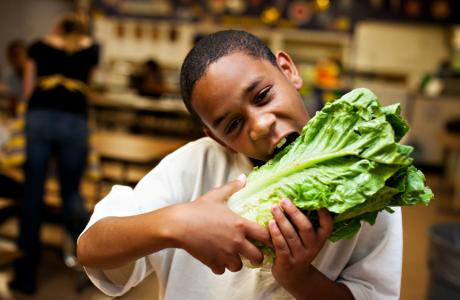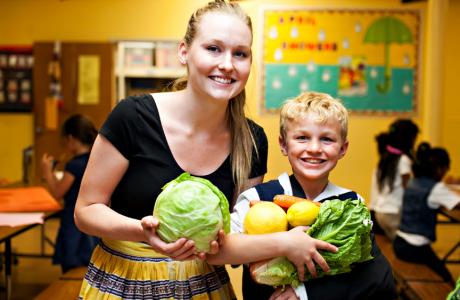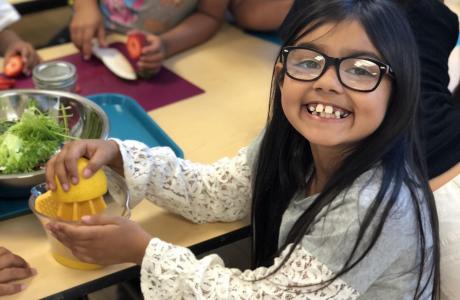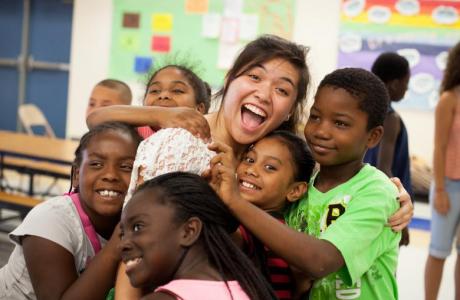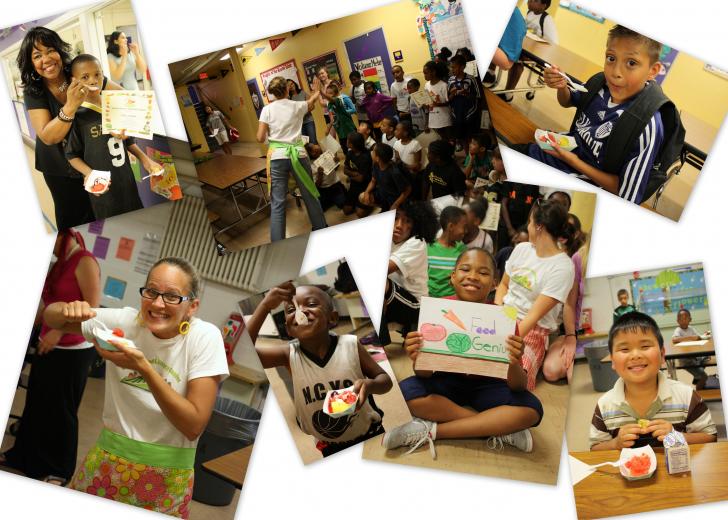Chief Food Genius Answers Most Popularly Asked Question
Nopales Notes from the Chief Food Genius
Five is a fig-tastic number! There are five senses that help us experience the joy of good food: sight, touch, taste, smell and sound. Food also has five flavor categories: sweet, sour, salty, bitter, and umami. High fives are a gesture of celebration. The number five has been known to symbolize health.
Yes, five is pretty radish! We’re celebrating the number five at Food Literacy Center, because this month five years ago, the idea of the nonprofit came to life.
The question I’m asked most frequently is “how did you start Food Literacy Center?” The answer to that question is long and complicated. It took years of learning, reading, researching, questioning and experiencing our local food movement for the idea to form.
Yet, I remember precisely where I was when the idea to build a knowledge-based nonprofit crept into my brain and lodged itself firmly into that corner of the mind where we commit thought to action. There’s a place in your brain, powerfully connected to your heart, where feeling and thinking collide, causing a great deal of discomfort. The only cure is to act. The bigger that feeling, the harder and faster you must work to resolve it.
This call to action happened to me while I was standing in a bookstore dedicated entirely to works of food nonfiction. In a store the size of most people’s living rooms, stacks of cookbooks, memoirs, and investigative hardbacks stretched from floor-to-ceiling. I wanted to read them all!
The yearning for my own food literacy started several years prior when I read Jane Goodall’s Harvest for Hope. There, the story of a broken food system unraveled itself in sharp knots into my heart. The health implications, the environmental damage, the economic burden—there is no single subject that our food system doesn’t cross. Women’s rights, civil rights, poverty, hunger, children’s health, urban planning—they all stand in the path of a food system that rolls over them.
From that book forward, my hunger for food literacy became unquenchable. Here I stood, witnessing the encyclopedic depth of food education I had yet to uncover.
I started to ask questions about the reality of the place I was standing.
In the face of the many issues contained in those books, how could we, as society, ever begin to understand the food system?—let alone fix it?!
I want to live in a world where such book stores exist—and thrive! This kind of collection shouldn’t be tucked away in an obscure neighborhood in an affluent town—it should be part of a required stock of public school textbooks.
I want to live in a world where food literacy is taught on par with reading, writing and math. Because when it comes to food, we all need to get up close and personal with it three times a day. Children need to be given the knowledge to make food choices that help their health, our environment and our economy.
And so it was on that day five years ago that an idea collided with a feeling that had been resting in knots inside of my heart and my belly for years. That pileup caused a burst of action that quickly became Food Literacy Center. It took only six months from the day this happy accident occurred, to the day I taught our first elementary school class.
My quest for food literacy fuels my every waking moment. When all is quiet and I’m driving my car, resting on the beach, or petting my cat, the call to action whispers in my ear, kicks at my heels, and tugs at my heart.
I find comfort in knowing that I’m not the only person that this action calls upon. I’m surrounded by a team (of 5!) that rises daily to greet our mission with enthusiasm. We’re joined by over a hundred volunteers, board members, community leaders and partners in the food movement who make the mission of creating food literacy in Sacramento a reality.
In our first year we served 120 kids, and just this year our work touched the lives of over 20,000 kids. We’ve trained 72 volunteer Food Geniuses to serve as our action team, allowing us to scale from one school to eight in four short years.
The rhubarb revolution is here. The call to action has been sounded. Jicama high fives to the Sacramento community that has made this work a reality!
We’ve only just begun.


